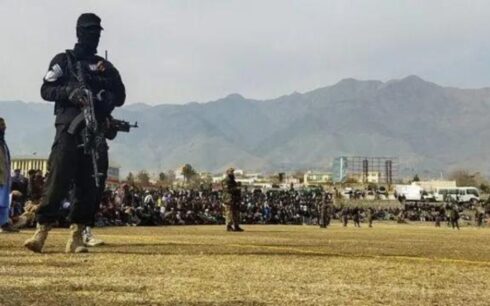KABUL, Afghanistan — A worsening water shortage in Kabul has left many residents waiting hours in line to collect barrels of water, with some forced to spend a significant portion of their income on water deliveries from tanker trucks.
In neighborhoods like Khair Khana, residents line up daily for clean water, spending as much as 400 to 500 Afghanis (around $6 to $7) weekly, a substantial expense in an economy hit hard by poverty.
“We used to buy water three to four times a week, but now even 500 Afghanis isn’t enough to meet our needs,” said one Kabul resident, explaining that his family had to move to another area with better water access due to the rising cost of water, which had exceeded their food expenses.
The water crisis has been exacerbated by the lack of a sustainable, organized water distribution network, leaving families in some neighborhoods to rely solely on tanker deliveries. In other areas, residents carry barrels to the river to collect water, a time-consuming and physically demanding task.
The shortage extends beyond Kabul, affecting other provinces grappling with severe drought. In Kunduz, one resident described the daily struggle: “When there’s no water, we have to fetch it from the river. Where is the government to address these issues?” Another resident from Kunduz added, “People have to wait, hoping water will arrive. If it doesn’t, they’re left with no choice but to go to the river.”
In western Kabul, shortages have become routine, with residents repeatedly voicing frustrations about the high cost of clean water. “We’re facing a severe water shortage. Amid poverty, we pay 10 Afghanis per 10 liters,” said one resident.
Despite the crisis, Taliban has not yet provided a plan or solution to alleviate the water scarcity in Kabul or other affected regions. In July, the U.N. Food and Agriculture Organization identified drought as the primary challenge for Afghanistan’s agricultural sector, calling it the “most destructive force” impacting agriculture worldwide.





